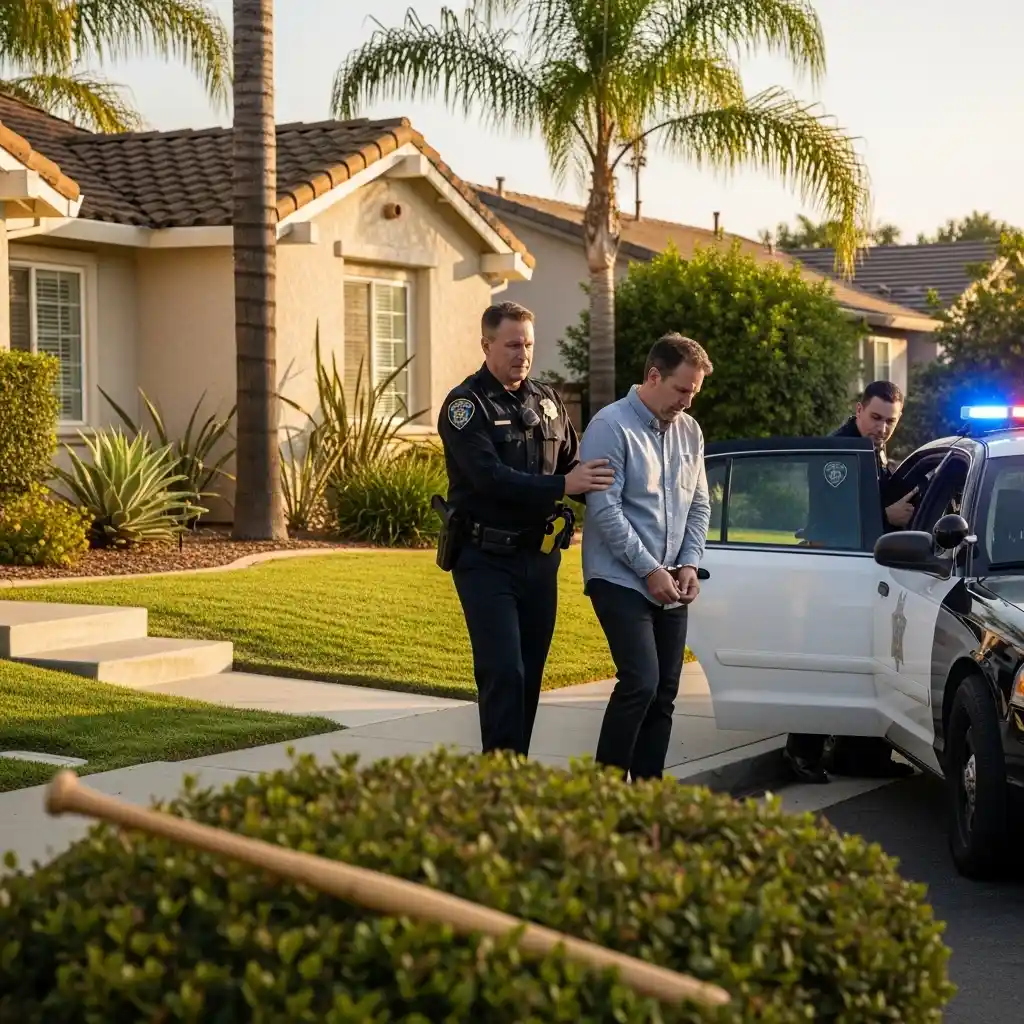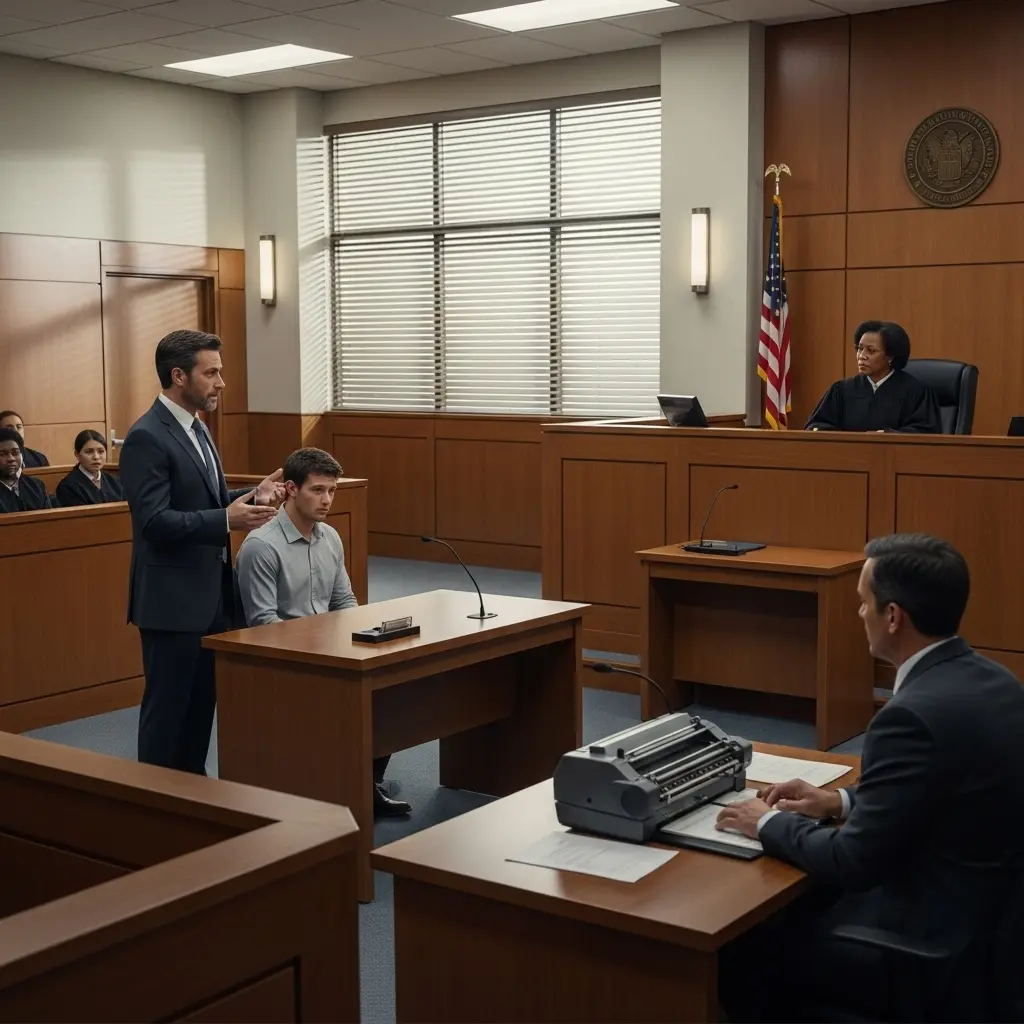

Assault with a deadly weapon charges under California Penal Code Section 245(a)(1) represent some of the most serious accusations you can face in the state's criminal justice system. Often referred to as "ADW," these charges carry the potential for years in state prison, permanent criminal records, and life-altering consequences that extend far beyond any court-imposed sentence. At H Law Group, we understand that ADW charges frequently arise from moments of poor judgment, self-defense situations, or even completely false allegations, and we have extensive experience providing aggressive defense representation for clients facing these serious accusations.
California's assault with a deadly weapon statute is found in Penal Code Section 245(a)(1), which makes it a crime to commit an assault upon another person with a deadly weapon or instrument other than a firearm. This law is designed to address situations where the presence of a weapon significantly increases the potential for serious harm, even if no actual injury occurs.
Penal Code Section 245(a)(1) states: "Any person who commits an assault upon the person of another with a deadly weapon or instrument other than a firearm shall be punished by imprisonment in the state prison for two, three, or four years, or in a county jail for not exceeding one year, or by a fine not exceeding ten thousand dollars ($10,000), or by both the fine and imprisonment."
Essential Elements of the Crime:
To secure a conviction for assault with a deadly weapon under PC 245(a)(1), prosecutors must prove beyond a reasonable doubt that:
No Contact Required:
One of the most important aspects of ADW charges is that actual physical contact is not required for a conviction. Simply threatening someone with a deadly weapon or causing them to reasonably fear imminent harm can be sufficient for charges to be filed.
No Injury Required:
Similarly, the alleged victim does not need to be injured for assault with a deadly weapon charges to be filed and prosecuted successfully. The potential for harm, combined with the use of a weapon, is enough to support the charges.
General Intent Crime:
ADW is considered a "general intent" crime, meaning prosecutors don't need to prove you intended to cause specific harm. They only need to show that you intended to commit the act itself, not that you specifically intended to injure someone.
The definition of "deadly weapon" under California law is broad and encompasses far more than just traditional weapons like guns or knives. Understanding what can be considered a deadly weapon is crucial for anyone facing ADW charges.
California courts define a "deadly weapon" as any object, instrument, or weapon that is either:
This expansive definition means that virtually any object can potentially be classified as a deadly weapon depending on how it's used and the circumstances surrounding its use.
Traditional Weapons:
Household Objects Used as Weapons:
Improvised Weapons:
Factors Courts Consider:
When determining whether an object qualifies as a deadly weapon, California courts examine:
Beyond objects, PC 245 also criminalizes assault "by any means of force likely to produce great bodily injury." This provision can apply even when no weapon is used, if the force involved could reasonably cause serious physical harm.
Examples include:
Assault with a deadly weapon is classified as a "wobbler" offense in California, meaning prosecutors have discretion to charge it as either a misdemeanor or felony based on the circumstances and the defendant's criminal history.
When charged as a misdemeanor, PC 245(a)(1) violations carry:
When charged as a felony, the potential consequences are much more severe:
Certain circumstances can significantly increase penalties for ADW convictions:
Great Bodily Injury Enhancement:
If the victim suffers great bodily injury, an additional 3-6 years may be added to the sentence under PC 12022.7.
Firearm Use:
While PC 245(a)(1) specifically excludes firearms, using a gun in an assault is charged under PC 245(a)(2) with enhanced penalties:
Assault on Protected Persons:
Enhanced penalties apply when the victim is:
Beyond criminal penalties, ADW convictions carry significant collateral consequences:
Professional Impact:
Immigration Consequences:
For non-citizens, ADW convictions can result in:
Civil Rights Impact:
Three Strikes Implications:
ADW convictions count as "strikes" under California's Three Strikes law, meaning:

Experienced criminal defense attorneys can employ various strategies to defend against assault with a deadly weapon charges, depending on the specific circumstances of each case.
Legal Justification:
California law allows the use of reasonable force, including deadly weapons, when necessary for self-defense. Under CALCRIM 3470, self-defense is justified when:
Elements of Self-Defense:
Factors Supporting Self-Defense:
Protecting Third Parties:
California law also permits the use of force to defend others from imminent harm. The standards are similar to self-defense:
Common Scenarios:
Accidental Actions:
ADW requires willful conduct, so genuinely accidental actions may not support conviction:
Distinguishing Accidents from Negligence:
Challenging Weapon Classification:
Defense attorneys can argue that objects used don't qualify as deadly weapons:
Evidence-Based Arguments:
Investigating False Claims:
ADW charges sometimes arise from false allegations motivated by:
Defense Strategies:
Self-defense represents one of the most important and frequently used defenses in assault with a deadly weapon cases. Understanding California's self-defense laws is crucial for both defendants and their attorneys.
Reasonable Belief Standard:
California courts apply an objective "reasonable person" standard when evaluating self-defense claims. The question is whether a reasonable person in the defendant's position, knowing what the defendant knew at the time, would have believed force was necessary.
Imminent Danger Requirement:
The threat must be immediate and present, not future or conditional. Threats of future harm, no matter how serious, generally don't justify immediate use of force.
Proportionality Principle:
The force used in self-defense must be proportional to the threat faced. Using a deadly weapon against a minor threat may not be justified, while using significant force against a life-threatening attack may be reasonable.
Reducing Charges:
Even when self-defense doesn't fully justify actions, "imperfect self-defense" may reduce charges:
Defendant's Physical Characteristics:
Alleged Victim's Characteristics:
Circumstances of the Incident:
Understanding how ADW cases are investigated and prosecuted can help defendants and their families prepare for what lies ahead.
Police Response:
Law enforcement typically responds to ADW situations through:
Evidence Collection:
Police investigators focus on gathering:
Factors Influencing Charges:
Prosecutors consider multiple factors when deciding whether to file ADW charges:
Charging Alternatives:
Prosecutors may consider alternative charges such as:
Common Plea Agreements:
ADW cases often resolve through plea bargaining involving:
Strategic Considerations:
Expert testimony can play a crucial role in defending against assault with a deadly weapon charges, particularly in complex cases involving technical issues or specialized knowledge.
Injury Analysis:
Medical experts can provide crucial testimony about:
Mental Health Evaluation:
Psychological experts may address:
Accident Reconstruction:
Forensic experts can analyze:
Weapon Analysis:
Technical experts may evaluate:
Law Enforcement Training:
Former police officers or trainers can testify about:
Assault with a deadly weapon charges frequently arise in domestic violence contexts, creating additional legal complexities and consequences.
Domestic Violence Enhancements:
When ADW occurs in domestic relationships, additional penalties may apply:
Special Prosecution Policies:
Many California jurisdictions have specialized domestic violence prosecution units with policies including:
Unique Challenges:
Domestic violence ADW cases present special defense challenges:
Defense Strategies:

For non-citizen defendants, assault with a deadly weapon convictions carry severe immigration consequences that can be more devastating than the criminal penalties themselves.
Aggravated Felony Classification:
ADW convictions are generally classified as "aggravated felonies" under federal immigration law, resulting in:
Crime Involving Moral Turpitude (CIMT):
ADW convictions also qualify as crimes involving moral turpitude, which can lead to:
Immigration-Safe Pleas:
Experienced attorneys work to negotiate plea agreements that minimize immigration consequences:
Post-Conviction Relief:
When deportable convictions occur, options may include:
Assault with a deadly weapon charges under California Penal Code Section 245(a)(1) represent serious accusations that can forever change your life, career, and future opportunities. The broad definition of "deadly weapon" means that many everyday objects can potentially be used to support these charges, and the severe penalties involved make experienced legal representation absolutely essential. Whether you're facing charges, under investigation, or concerned about potential legal issues, understanding your rights and options is crucial for protecting your interests. The difference between a conviction and a successful defense often depends on the quality of legal representation and the strategic approach taken from the very beginning of the case.
Take All ADW Charges Seriously: Even if you believe you acted in self-defense or the charges seem minor, ADW convictions carry severe consequences that require professional legal help.
Act Quickly: Early intervention by experienced counsel can often prevent charges from being filed or significantly improve outcomes when charges are filed.
Understand Your Rights: You have important constitutional protections, including the right to remain silent, the right to legal counsel, and the right to defend yourself and others from harm.
Don't Navigate Alone: The complexity of ADW law and the stakes involved make experienced legal representation crucial for protecting your rights and achieving favorable outcomes.
Consider All Consequences: Beyond potential jail time and fines, ADW convictions can affect employment, professional licenses, immigration status, and many other aspects of your life.
Document Everything: Gathering evidence, witness information, and documentation of circumstances can be crucial for building effective defenses.
Assault with a deadly weapon charges can seem overwhelming, but with proper legal representation and strategic advocacy, you can successfully defend against these allegations and protect your future. The sooner you act, the more options are available for protecting your rights and preserving your freedom. Don't let ADW charges destroy your life's work and future opportunities. Contact H Law Group today for immediate consultation and comprehensive legal representation. Our experienced team is ready to fight for your rights, challenge the prosecution's case, and help you navigate this difficult time with the skilled advocacy you deserve.
References
Penal Code § 245 – Assault with a Deadly Weapon
CALCRIM 3470 – Right to Self-Defense or Defense of Another
Penal Code § 12022.7 – Great Bodily Injury (GBI) Enhancement
Penal Code § 667 & § 1170.12 – California's "Three Strikes" Law
Penal Code § 240 (Simple Assault) & § 242 (Simple Battery)
Please note that the information provided in this article is for general informational purposes only and does not constitute legal advice. This content was last reviewed and updated by our legal professionals in October 2025 to reflect the current state of the law, including the broad definition of a "deadly weapon" and the legal standards for self-defense. California's assault laws are complex, subject to change, and their application depends heavily on the specific facts of your case and the county where charges are filed. For personalized advice from an attorney regarding your specific situation, we strongly encourage you to contact the H Law Group for a free, confidential consultation.
Under Penal Code 245(a)(1), it’s illegal to assault someone using a deadly weapon or force likely to cause great bodily injury. This includes guns, knives, vehicles, or any object used dangerously.
Yes. ADW is a “wobbler” — it can be charged as a misdemeanor or felony depending on the circumstances, weapon type, and injury severity.
Felony ADW can result in up to 4 years in state prison and fines up to $10,000. Misdemeanor ADW can mean up to 1 year in county jail.
Yes. ADW doesn’t require actual injury — the act or threat of using a deadly weapon is enough for charges to be filed.
Self-defense, defense of others, lack of intent, false allegations, or the object not qualifying as a “deadly weapon” under California law.